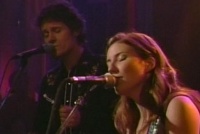Jam Session
Contents
|
In addition to the notes below that apply to "Jam Session", check out:
|
Stakeholders and their Interests & Motives
There are many stakeholders in this scenario. Some of these have competing interests and some have interests that complement each other. It would be good to know more about what you want to do.
Examples of Stakeholders and Interests & Motives
- Players - Pros - give them a place to play
- Players - Up and coming - give them a place to showcase
- Players - Amateurs - give them a place to play (some who don't normally get to play in public)
- Songwriters - give them a chance to perform, and perhaps meet Players
- Audience members - various reasons
- Venue - bring (paying?) traffic through the doors
- You - Monetary?
- You - non monetary
- ... lots more if you look for them
You could produce the show differently depending on where you prioritize the various stakeholders with their interests and motives.
Here is one structure that has worked well for me and managed to meet the needs of several of the stakeholders in the list above (3, 4, 5, 6, 7, 8)
Outline for a 3-4 hour show
Opening Host 30-45 minutes
Host act 30-45 minutes depending on how many pre-booking we've had. see:[Jam Session#Pre-Booking|Pre-Booking]])
Host act (solo, duo, band) opens the show with a set. This can be a full set or just a warm up. I like to do a set that is
- Entertaining (provides value to the audience)
- Sets the tone for the room
- Suggests the kinds of music that are suitable for the room
- Gives performers time to arrive, settle, sign-up (there's a sign up sheet see:Sign Up Sheet)
- Gives the venue time to serve whatever they sell
- Consider doing a quick introduction of the L1®. This can be a 30 second announcement. Just for example. Imagine that you are pointing at things and doing interesting things with the microphone as you say...
- Hi everybody,
- Just a reminder that we are using the Bose L1® sound system tonight. That means that you the performers will be controlling your sound. I will be here to help, but the controls will be up here on stage with you.
- For you in the audience, that means that if you can't hear the vocals you can tell the performer - repeat after me. "Eat the mic!"
Middle Guest acts 60-120 minutes
- typically 3 songs max or 15 minutes depending on what is going on.
- 5 - 10 minutes turnaround between acts
- if you stick to the schedule you can do 3-4 acts per hour for 6-8 acts for the show
End - Host act 30-45 minutes
Host act closes the show with another set.
- Entertaining (provides value to the audience)
- A chance to acknowledge various people who have played
- Occasionally bring some of the guest performers up on stage for a song
- Gives the venue time to serve whatever they sell
Some Details
Pre-Booking
I invite people to sign-up in advance by email. When they do, I want a firm commitment about what time they will be there and if they are late, they may forfeit their spot.
Sign Up Sheet
One line per individual performer
Depending on style of music each line might include some or all of these points.
- Name of individual
- Style of music (may not be necessary if you are doing a jam based on a specific genre)
- Instrument (or Vocal, lead or harmony)
- Playing with (name of known collaborators)
- Would like to include (other instruments or vocal roles they would welcome on stage)
- Contact info: Okay to share with other performers
- Other comments
As you can tell from the list, this would be suited to a jam session event that is somewhat organized chaos. Individual performers tell you what role they would play and if they want to collaborate. Then the host (you) put together the acts and schedule them on the stage. If you want, you and anyone you brought with you as the host act can stand-in to support these impromptu acts.
It is a lot of work but if you do it well it can be a boat load of fun and very rewarding.
Other thoughts
There are a lot of other details I haven't covered. If you want to get into more details we can talk them, but here are a few thoughts
- Stage setup (one of more L1®s - and then you get to think about who is controlling the Remotes or T1®s)
- Gear provided (will you provide or lend instruments? Drum Kit?)
- If you are using L1 Classics or L1 Model Is, then you may want to bring a Mixer and Acoustic Guitar DIs
- Roles, Rules, and Boundaries
- Who is in charge
- Who will introduce each act (you or will you share this)
- What you will do when the crowd asks for "more, more, more" from a particular artist
- Compensation for performers (typically no more than a beverage)
- Coaching / Training provided (These days I provide a Coaching sheet for using the L1®)
